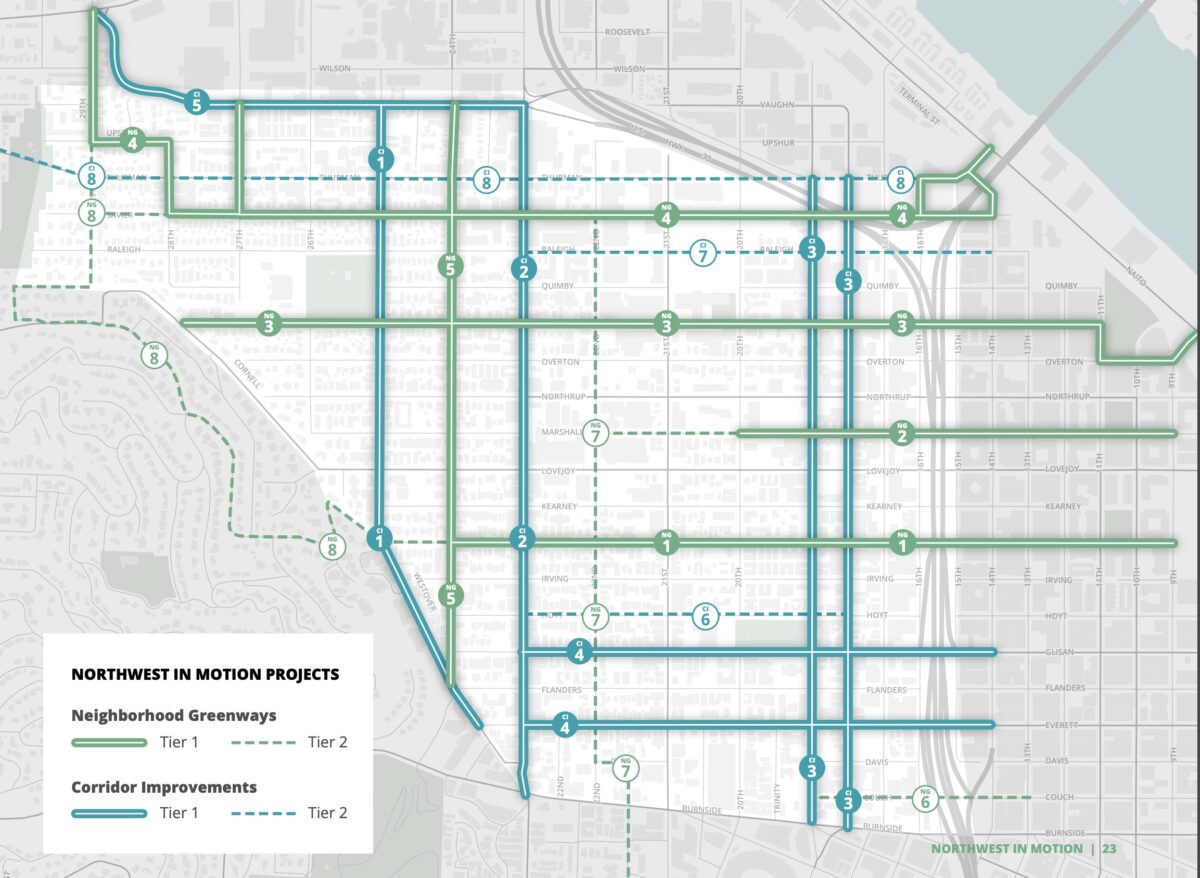
(Map from NW in Motion Plan, PBOT)
The Northwest in Motion Plan is done. After a two-year process to identify and prioritize shovel-ready projects that could give a major boost to biking, walking and transit use, PBOT is ready to take the plan to City Council and start breaking ground.

And unlike other plans, PBOT believes this list of projects has the feasibility and funding to get built right away.
There are many reasons to be bullish about biking in northwest. People who live there are nearly four times more likely to not own a car than the citywide average (38% to 10% respectively) and 38% of all trips made by automobile are less than three miles long — a very doable distance by bike. PBOT sees a glaring lack of connectivity and safe streets infrastructure in this part of town, which is probably why it has only 8% bicycle mode share while other inner neighborhoods in north/northeast and southeast Portland have 14%. Biking’s inherent affordability compared to driving and transit should also be appealing to northwest residents, given that households in the area this plan focuses on have significantly lower average annual household incomes compared to the rest of the city ($48,000 and $64,000 respectively).
PBOT’s strategy to move more people more safely with fewer cars, is to develop backstreets into “neighborhood greenways” and update infrastructure on more prominent corridors so that people on foot and bike feel more comfortable. Here are some of the renderings:
They’ve broken down the project list to two tiers. Tier 1 includes: new neighborhood greenways on Johnson, Marshall, Pettygrove/Overton, Savier and 24th; and “corridor improvements” on 25th/Westover, 23rd, 18th/19th, Everett/Glisan and Vaughn. Tier 2 includes: new neighborhood greenways on Couch, 22nd/Marshall, and Westover/Macleay Park; and “corridor improvements” on Hoyt, Raleigh, and Thurman.
Advertisement
Tier 1 is where the action is. These are the projects PBOT says have a “high level of readiness” and can be fully built out within the next five years. Once the Tier 1 greenways are built, PBOT says nearly all residents and businesses in the focus area will be within 500-feet of a low-stress bikeway (see graphic below).
How will they reduce the stress of biking and walking in northwest? One major tool will be diversion — keeping drivers off certain streets and funneling them onto others. PBOT’s diversion strategy will be to install a series of interim diverters on the edges of the focus area and then monitor traffic levels for one year. If traffic falls within adopted levels of a low-stress street (1,000 of fewer cars per day), those diverters will be made permanent. If those diverters don’t work, they’ll look at more pronounced measures on neighborhood streets on a case-by-case basis.
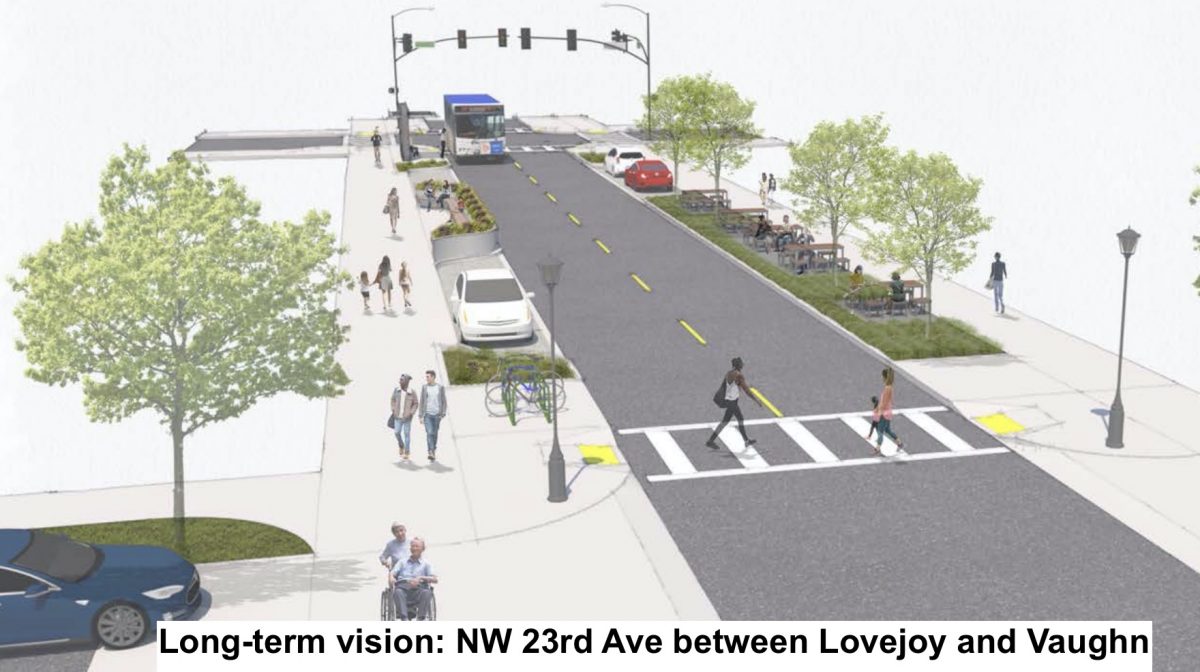
The big fish in the sea of PBOT’s project list is NW 23rd Avenue, northwest Portland’s main street. PBOT speaks about 23rd in visionary terms in this plan, saying they have “a unique opportunity to reimagine the main street typology and include a host of streetscape, urban design, and placemaking opportunities.” “The street is more of a ‘place’ than a ‘corridor'” the plan goes on to say. The only problem is PBOT estimates their vision for the street would cost $10 million because of the need for new pavement and a major traffic signal upgrade. That’s more than all the other nine Tier 1 projects combined.
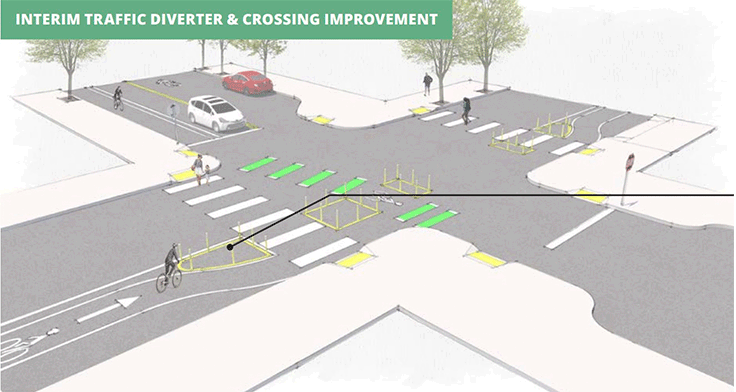
(Animation by BikePortland)
The good news is PBOT is confident those nine other projects can be funded and built. Here’s a snip from the plan:
“Tier 1 Projects consist of relatively low-cost capital improvements such as signage and striping, speed bumps, curb extensions, median islands, and modifications to existing signals, that can be fully designed and constructed in the near term using available resources. Planning-level cost estimates were prepared using best available costs of similar past projects, and even with a 50% contingency added to the construction costs to cover soft and unanticipated costs, it is calculated that nine projects add up to less than $5 million. Since Northwest in Motion is meant to be a five-year implementation strategy, this results in a funding need of roughly $1,000,000 per year for these projects. A combination of parking revenue, system development charges, and general transportation revenue will be enough to fund this set of projects.”
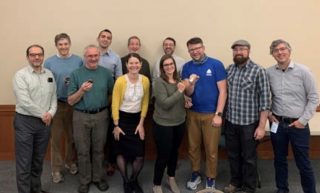
(Photo: PBOT)
$1 million a year sounds like a bargain for making significant steps in cleaner, healthier, more efficient, and safer mobility options in northwest. With biking likely to absorb former transit trips due to Covid-19 concerns, we need to act fast to make our streets cycling-compliant. This plan can help us get there.
If you’d like to testify on this plan at City Council, it’s scheduled for a public hearing at 2:00 pm on Thursday, July 23rd. Download the plan and learn more at NorthwestInMotion.com.
UPDATE, 5:55 pm on 6/25: In very related news, PBOT announced today they’ve finally broken ground on the Flanders Crossing Bridge! This is the lynchpin in the long-awaited Flanders Neighborhood Greenway. Read all about it via the official announcement.
— Jonathan Maus: (503) 706-8804, @jonathan_maus on Twitter and jonathan@bikeportland.org
— Get our headlines delivered to your inbox.
— Support this independent community media outlet with a one-time contribution or monthly subscription.

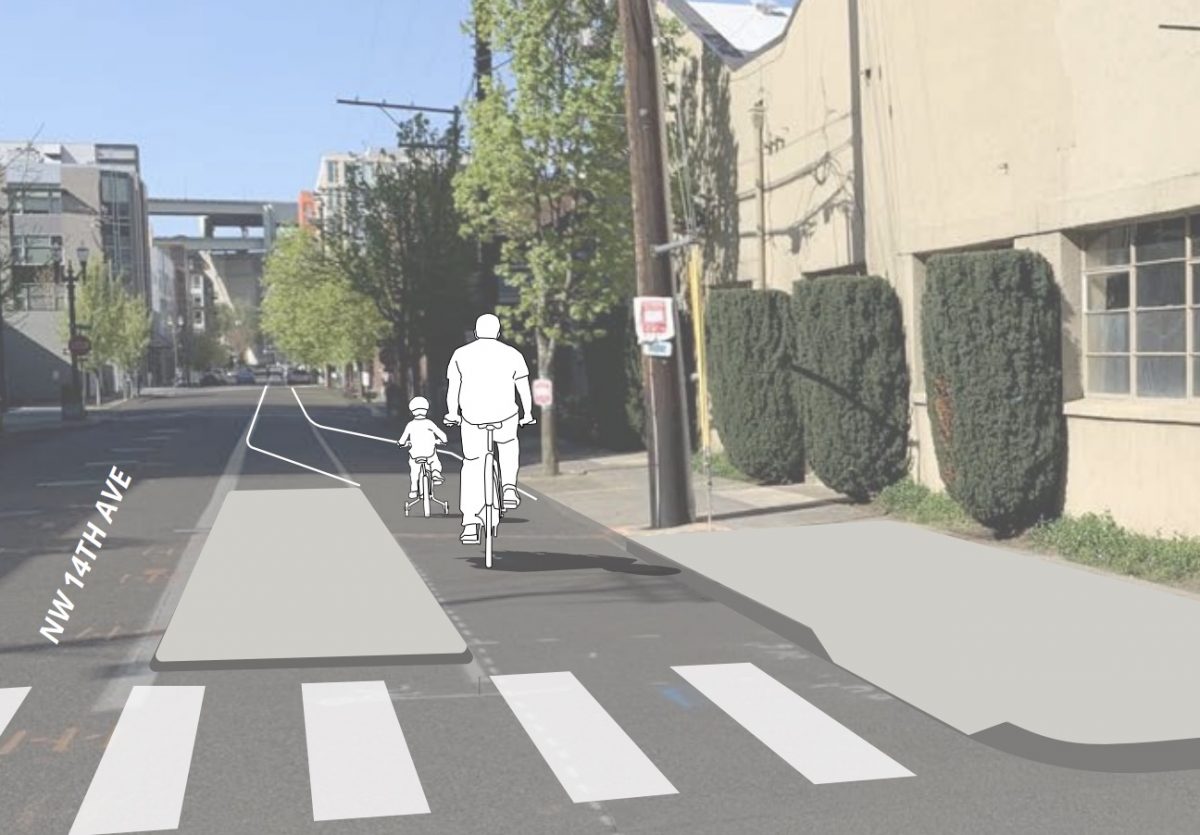

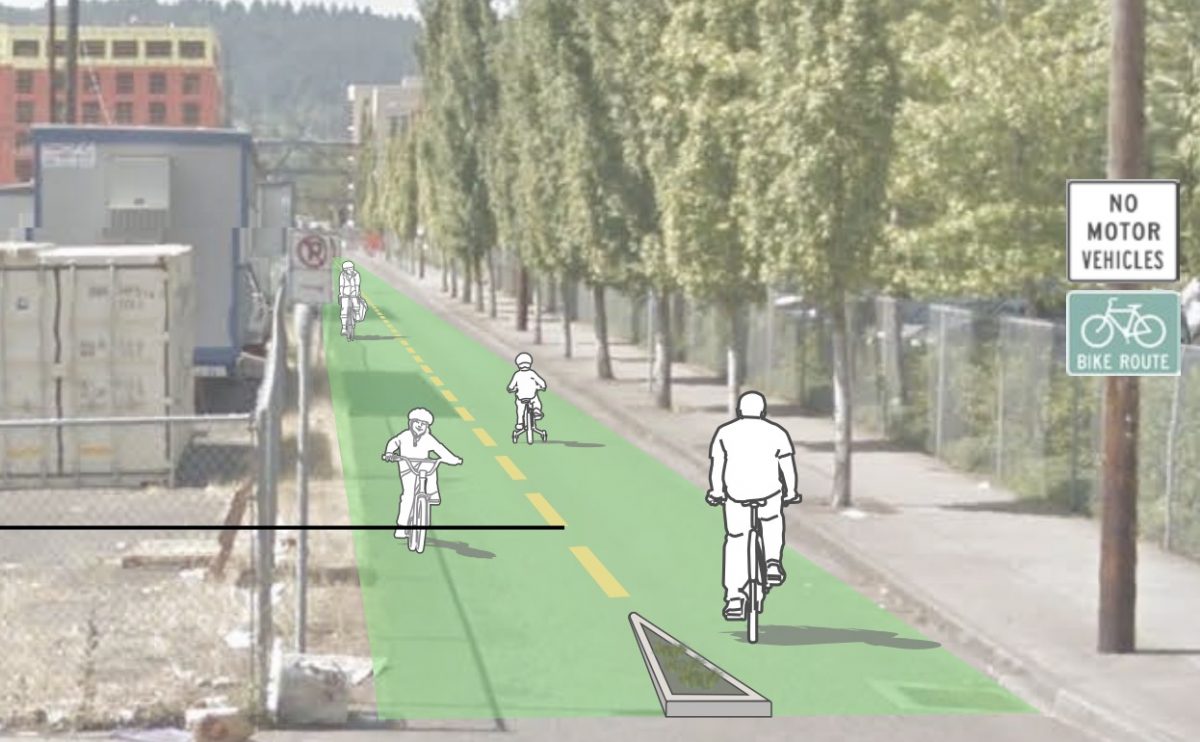
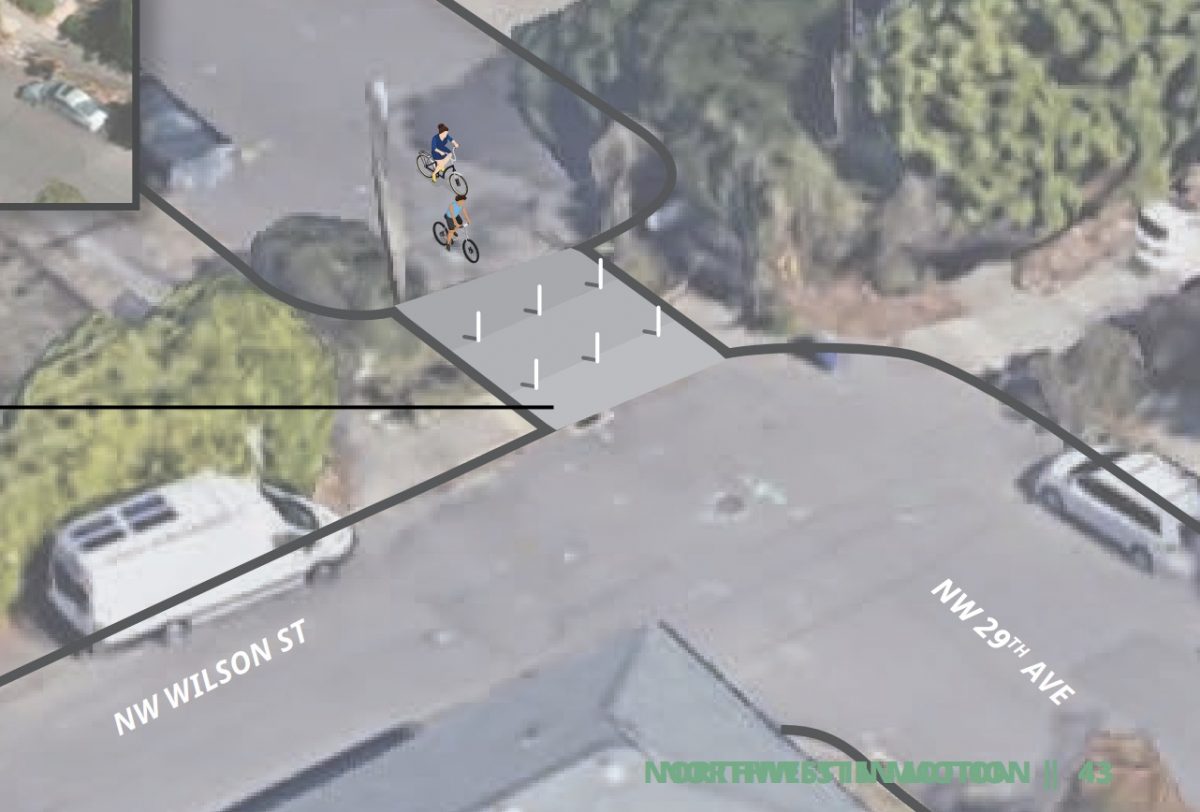
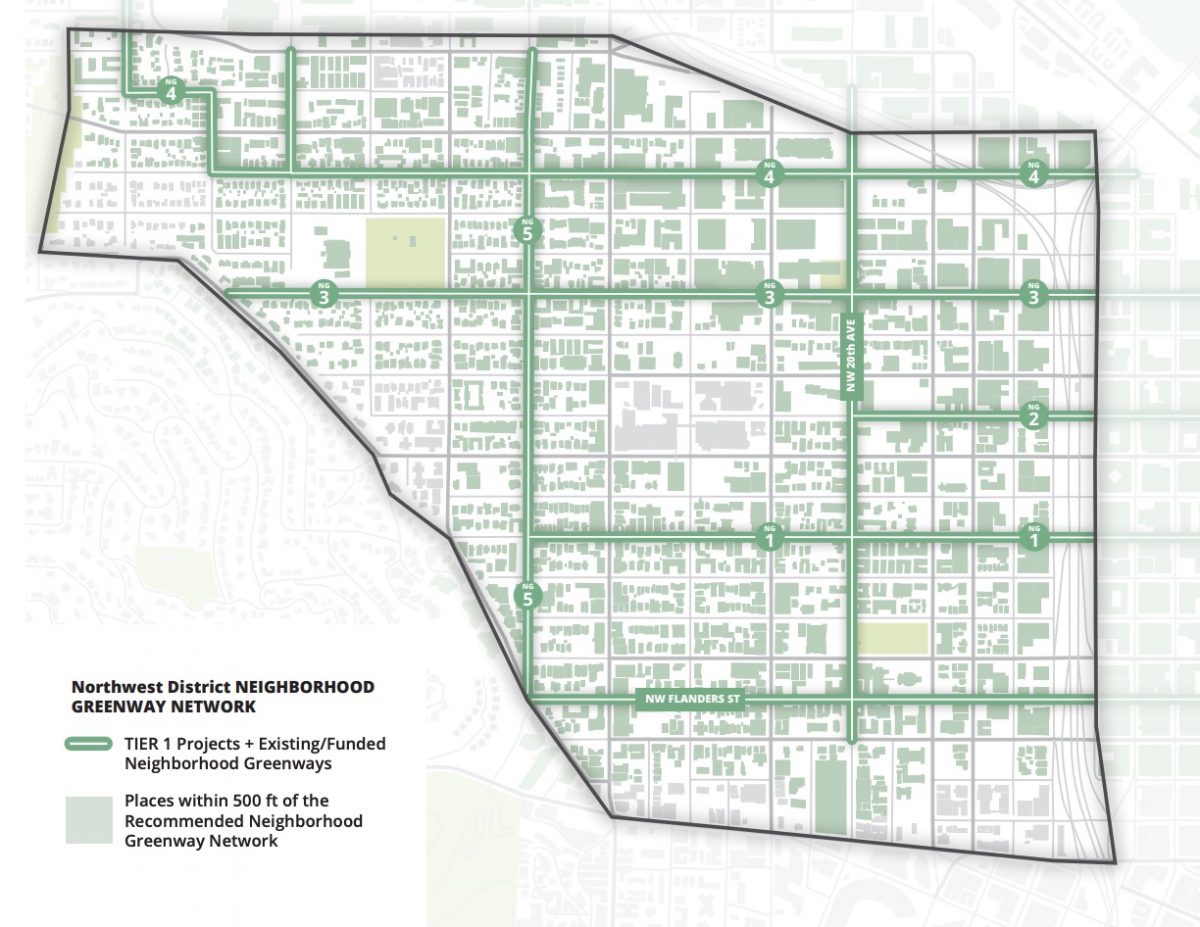


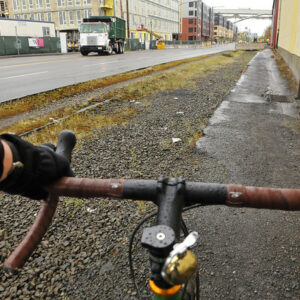
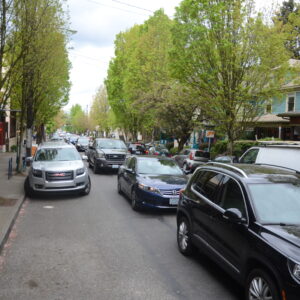
Thanks for reading.
BikePortland has served this community with independent community journalism since 2005. We rely on subscriptions from readers like you to survive. Your financial support is vital in keeping this valuable resource alive and well.
Please subscribe today to strengthen and expand our work.
These plans look good, and I look forward to implementation soon. But by limiting the plan to the neighborhoods west of I-405, the connections to other quadrants of the city and the center of Downtown are limited. Looking at the current NW Portland bike network maps, the big problem is a lack of safe, low-stress, low-traffic routes from these NW neighborhoods to inner SW (the Downtown core) and across Old Town: https://www.portlandoregon.gov/transportation/article/322253
The east-west routes end at NE 13th/14th – which have bike lanes part of the time, but cross many freeway on-ramps, and NE 9th, which is a difficult connection with no bike lanes or traffic calming.
Unless PBOT also creates low-traffic bike routes in both directions across the Pearl District and Old Town, this plan will not be fully successful.
The addition of the Flanders bridge over I-405 would be the most helpful part of the current plan, but the connection from Flanders to the watefront and Steel Bridge is currently poor, and the north-south routes from Flanders to the downtown core south of Burnside are limited. A greenway on 9th or Park is the big missing link there. Futher north, NW Johnson and NW Overton need a safe, low-stress connection to the Broadway bridge and to the waterfront. For Johnson this may not happen until the old post office property is redeveloped, but NW Overton needs a better connection via 9th and Naito now.
The east-west greenways in NWIM extend into the Pearl, as shown in the map above. What’s not shown is NW Flanders, because it’s already under construction (or will be any day now). That will link NW 23rd all the way to the Steel Bridge, in a refreshingly straight line.
You should check out Central City in Motion! That’s the plan to improve bikeways in the downtown area and connecting up into the Pearl District.
I wonder why there’s no mention of Flanders Crossing?
Good question Anna.
That’s because Flanders – the greenway and the bridge – are totally separate and already funded/designed through other processes.
Thanks for the answer! I’m very eagerly anticipating this project finally happening, as it will probably be part of my daily commute. Feels like I’ve been waiting forever for that bridge! Curious if they’ve actually started on construction; I know it was supposed to start late 2019/early 2020 but I haven’t seen any signs of anything happening yet.
Thank god! The affluent white folks in NW haven’t had a major infrastructure project in at least two weeks! I rest easy knowing that even though we have three and a half urban interstates up here in NoPo and zero bike infrastructure west of I-5, wealthy yuppies can have safe infrastructure they don’t use.
Ace job PBOT
Aye. We need a plan to make this area even more affluent, to ‘vastly’ improve what is already Portland’s best area for bicycling, and to more quickly push out the 26% apparently left in NW who didn’t have the wisdom to be born white. PBOT at its best!
Hey, you guys are getting that awesome Greeley project.
Be careful what you wish for.
Nothing says modern bike infrastructure like have riding on a sidewalk baked into new projects!
Thanks for not stereotyping.
you did notice that median income is 25% lower there than the city as a whole, right?
edit: just noticed the discussion below about household size. a reasonable point.
Median income can also be misleading; if you’re comparing a group of junior engineers at Google living alone with, say, larger families with people earning $15-$20 per hour. They may have a similar median household income, but they are on very different trajectories.
Yes, but also note there are a high number of apartment buildings in this neighborhood, more so than other neighborhoods (from craiglist it looks to have the highest number of apartment listings than other neighborhoods), and a lot of them are older buildings not just the fancy expensive new ones. So while people in the houses are wealthy, those in apartments can be of a wide variety of economic backgrounds.
Hey JM, I’m confused as to why you keep misrepresenting NW as being a low-income neighborhood? Household income is not nearly as important as household income per household resident. NW has the lowest household sizes in the city (>2 per household), which makes that $48k go a lot farther. Folks in other parts of the city might have more money coming in, but that they need that money to pay for a 3br 2ba house for their family of 5 rather than someone making $48k and renting a studio by themselves in the Pearl.
It’s just bad statistics to not normalize the data.
Households are households are households. Why should we care more about a 5-person household than a 2-person household or even a 1-person household? They all have value, and one is not better than the other. NW Portland is a great landing area for new Portland residents working in low-income jobs because you don’t need to own a car and it’s one of the only parts of the city you can find relatively affordable studio and one-bedroom apartments in older buildings. It also has a high concentration of subsidized affordable housing for very low-income households, most of which are seniors and people with disabilities living alone. Do they not matter?
To put this another way, if you ask the average person who is more wealthy, a single person making $50,000 or a family of five making $200,000, the obvious answer is that the family of five is far more affluent. But by your math, their per-person income is $40,000, so they are lower-income? That’s just a terrible way to measure income and that’s why nobody ever measures it that way.
Well the last time I checked, and this might have changed, you actually have to pay more money to feed each additional member of a household. It’s crazy. They apparently require clothes and extra space too.
” That’s just a terrible way to measure income and that’s why nobody ever measures it that way.”
LMAO that’s how the federal poverty line is calculated…good god. You can draw silly strawmen. I’m an analyst who works regularly with the ACS. Income is tied to household size ALL THE TIME. What background do you have
Please, stick to what you know.
I’ll make it way simpler. Who is better off, a couple making $100k sharing a one-bedroom apartment, or a single person making $50k in the exact same one-bedroom? Obviously the latter, since there are inherent savings in sharing the costs of rent, utilities, food, etc. That couple will have far more disposable income.
I also still stand by the notion that a family of five making $200,000 a year would, and should, be considered very affluent. When the press reports on things like “the top 1%”, they typically use household income.
It’s only fair if every neighborhood has the same average number of adults per household. Who is better off, someone making $100k in a 1-bedroom apartment in NW Portland, or the 4 people making $25k who are splitting a small house in east Portland? The “household income” measure of wealth would say they are exactly the same.
That’s not true. Four unrelated housemates in one house are four households. It’s based on tax filing.
I’ll make it even simpler! Who is better off, a family of 5 whose household income is $65k who pays $1800 for rent or a single person whose household income is $50k who pays $1800 for rent?
Again, your strawmen only go to show you don’t know what you are talking about.
I forgot to address your actual example. In the real world, we don’t do basic division to come up with metrics on poverty. You see, we use our brains to come up with context-informed metrics that take into account many factors such as cost of housing, cost of food, social safety net, etc.
You sound like the people defending the electoral college system.
We should measure income per adult resident. “Household income” can be useful for certain things, but it doesn’t really paint the full picture.
I wouldn’t be surprised if Northwest has a smaller average household size than other neighborhoods, if for no other reason that it has many more types of housing in it. Many Portland neighborhoods are pretty much exclusively single family homes, while Northwest also has a large number of old and new apartment buildings.
Those apartments definitely have younger people living in them, who make fairly low wages but are likely to make higher wages later in their lives. That accurately describes me when I lived in Northwest, but certainly not everyone who lived in the building I lived in for its relatively low rents. It’s also worth noting that Northwest has a lot of large Home Forward buildings, whose residents skew a lot older and less likely to have higher earnings in the future.
And while I do think it’s worth pointing out that incomes in Northwest are a lot lower than they get made out to be, the fact that Northwest isn’t as affluent as it’s portrayed to be isn’t the sole/main reason for investing there. Northwest sees a *lot* of new housing built, as anyone who has walked or biked around the neighborhood in recent years can attest. Whether or not that housing growth comes with a huge increase in drive alone vehicle trips is a policy choice, and building some fairly cheap greenways is a good way to spend some of the parking revenue and system development charge revenue being generated in that neighborhood.
The Northwest District Association’s Transportation Committee will be meeting this Wednesday (July 1st) to talk about this and the NWDA Board will be meeting on July 20th to vote on whether or not to testify in support of this project before council on the 23rd and I expect it to be contentious. I’d highly encourage neighbors to attend (virtually, of course) either or both to voice your opinion on this, though the board meeting will be the decisive one.
http://northwestdistrictassociation.org/calendar/
Setting snarky sarcasm to one side, JM points out that the NWIM steering committee is overwhelmingly white (see photo). This is true. However, it’s equally true of SWIM and even EPIM 7 years ago. Bicyclists and walkers who are able and can afford to attend evening meetings both downtown and in their districts, AND who are self-volunteering, tend to be overwhelmingly white (and predominantly male). This is true both for predominantly white communities like Portland and Seattle, but also true for cities that have a large “minority” community, even in minority-majority cities. If you want a steering committee made up of a proportionate share of minorities, then either you’ll need to pay people to attend (through stipends, a common enough thing, and indirect subsidies) or recruit and directly appoint members who may have no interest in bicycling and walking issues. On the PBOT Freight Advisory Committee are several members who are paid staff of their organizations. Since many of these organizations also receive some city funding, usually through grants and contracts, one could argue the city is indirectly funding the attendance of certain members.
Our communities have many cyclists and walkers who are from visible minorities (and from invisible minorities like LGBTQ, American Indians and Puerto Ricans), but most are working so hard, and have been oppressed for so long, that few would even think of attending any public meetings, let alone serve on a PBOT steering committee, and even fewer could afford to do it (in terms of time and energy commitments.) Those who are able to do so tend to have a lot of free time on their hands and disposable income, which you know tend to be…well, white…
Which is why many oppressed groups tend to see city-sponsored volunteer committees as “racist” (and prioritized by social class, high-income, homeowners, and usually retirees). It’s not that the city intends such groups to be racist or that their staff are racist, or even that city policies are racist, it’s that “volunteer” steering committees are by their very nature are “institutionally racist” – only people who tend to have the time and inclination to join them usually happen to be born white – not their fault.